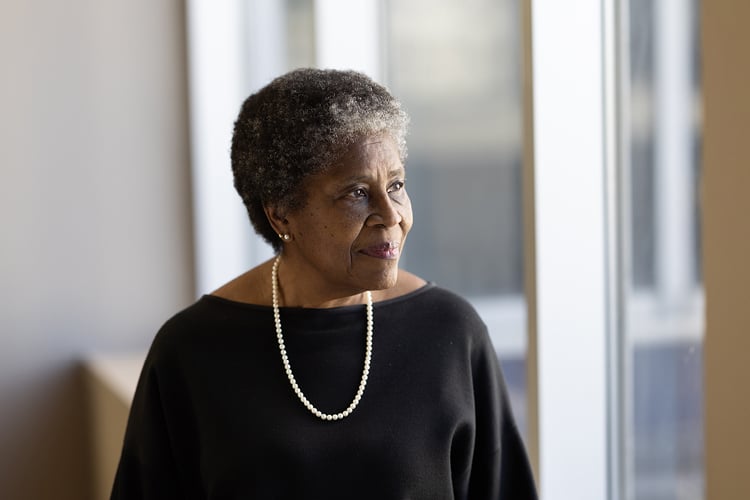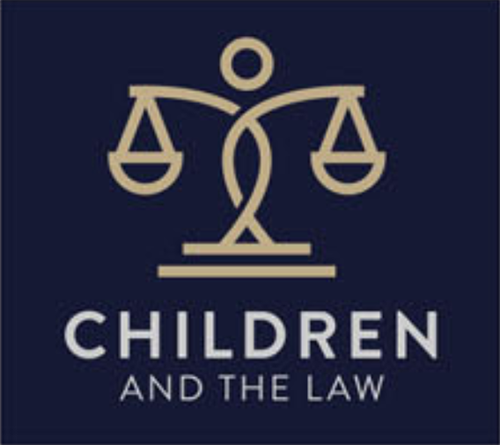Judge Ernestine Gray created a model court that put New Orleans children and families first

"You don't become a new person just because you become a judge," Ernestine Gray says. "It's just a title." (Photo by Kathy Anderson/ABA Journal)
For Judge Ernestine Gray, life has taken some unexpected turns.
In December 2020, Gray retired from the Orleans Parish Juvenile Court, where she served for more than 35 years. When considering the choices that shaped her career, she says she didn’t go to law school intending to become a judge. And, she adds, once she decided to seek a judgeship, she didn’t plan to be on the juvenile court bench.
Yet Gray—through decades of work in the courtroom and with organizations like the ABA—is credited with changing the field of children’s law in New Orleans and across the country.
The secret to her success? She believes it’s the support of her staff and stakeholders who share her commitment to creating better outcomes for children and families as well as her own penchant for making the most of every opportunity.
She encourages other juvenile court judges to do the same.
“You are impacting lives in a critical way,” says Gray, the chair of the Judicial Division and immediate-past chair of the Commission on Youth at Risk. “And if you are talking about children who are growing up, it’s going to help determine where they are in the future. I don’t want to look back and say, ‘If I had done X for this child, maybe they could’ve done great things.’ So in the moment where you are, do the good work.”
‘To be a voice for people’

Gray, one of four children, grew up in Orangeburg, South Carolina.
Her father held several blue-collar jobs while her mother worked for the telephone company and as a maid in New York. She helped her parents by picking cotton as a child and working alongside her mother as a maid during summers in high school.
Her mother encouraged her to go to college, and she thought she might apply to nearby South Carolina State University or Claflin University. But one of her teachers had graduated from Spelman College and encouraged her to consider the historically Black women’s college in Atlanta.
In 1964, she started at Spelman, where she studied political science. Inspired by the world around her, she decided to become a lawyer.
“I tell people that I saw myself being a person who would ultimately be like Perry Mason—I would get people to stand up in court and confess,” Gray says with a laugh.
“And of course, 1964 was a time in which there was a lot of civil rights work happening,” she adds. “The one African American lawyer I knew about was Matthew Perry out of Columbia, South Carolina. He was a civil rights lawyer, so I also saw myself as trying to do things in that realm, to help people and to be a voice for people.”
Gray married her husband, James, when she was a senior and lived in Virginia while he served in the Marine Corps. She graduated from Spelman, and three years later enrolled at LSU Law after they settled in Louisiana with their two children.
She graduated in 1976 and worked with the Baton Rouge Legal Aid Society and Louisiana Attorney General’s Office. She had spent several years as a trial attorney with the U.S. Equal Employment Opportunity Commission in New Orleans when she heard about an opportunity to run for judge.
The Greater New Orleans Louis A. Martinet Legal Society, of which Gray was a member, had concerns about the small number of African American judges on the bench and wanted to bring together people who were interested in filling open seats. Gray decided to throw her hat in the ring.
She first expressed interest in serving on the Orleans Civil District Court, but realized she could help more by vying for a seat on the Orleans Parish Juvenile Court, she says. In 1984, she ran for—and won—that seat.
‘A no-nonsense judge’

Gray initially handled all juvenile court matters, including abuse and neglect, delinquency and adoptions. But in response to a 1997 New York Times article that deemed the Orleans Parish Juvenile Court “the most troubled juvenile court system in the country,” she decided to help implement changes. She and her colleagues restructured the court, creating separate Dependency and Delinquency Divisions.
“I was personally offended by that article,” says Gray, who moved to the Dependency Division. “That should not be the way this court is known.”
The court received technical support from the National Council of Juvenile and Family Court Judges, and over the next several years reduced the number of abuse and neglect cases coming into the system. It became a model court for others around the country.
When Gray heard cases, she aimed to resolve them as quickly as possible, she says. She prioritized keeping families together and often went through a reasonable-efforts analysis with social workers who came before her.
“Do we really need to bring these children into care in order to keep them safe? Is there something else we can do that will allow them to stay in their family and still be safe?” Gray says. “From time to time, I would say to workers, ‘No, I am not going to authorize the removal of this child from their family. You are going to have to do one, two, three. And if that doesn’t work, then we come back.’”
The number of children in foster care in Orleans Parish decreased by 89%—compared with an 8% increase nationally—between 2011 and 2017, according to a 2019 Washington Post article that features Gray. The same article said 70% of New Orleans children who enter the system were discharged within a month. The national figure was only 5%.
Gray required a high level of competence from the lawyers and social workers who came before her. Keith Doley was one of those lawyers, representing children or parents in abuse and neglect cases and later becoming a pro tem judge in her courtroom.
“Ernestine was a no-nonsense judge,” says Doley, who is also the honorary consul of the Republic of South Africa for Louisiana. “She was dealing with troubled children and often had social workers who were overworked, underpaid, and they would come into court and not be prepared.
“I can remember her saying, ‘When you go home this evening, your child will have dinner cooked, your child will have a loving mother, and these children won’t. You have to make sure they are taken care of, they are properly placed, they are in a situation where they are going to be loved until they are either reunited with their parents or they are adopted.’”
Gray gave stuffed animals to the children and tried to make them feel as comfortable as she could. As they got older, she also spent a lot of time talking with them about education.
“One of the things I am particularly proud of is the fact that we were able to get several kids into college,” Gray says. “Many of them, because of their status as a foster child, were considered not college material. I thought that was a disservice to them, and I didn’t believe it was true.”
Community-minded
In 2022, the Center on Children and the Law recognized Gray—who has been an ABA member since law school—with its Mark Hardin Award for Child Welfare Legal Scholarship and Systems Change.
Gray is a past president of the National Council of Juvenile and Family Court Judges and held leadership positions in other organizations, including National CASA, Volunteers of America and the local YWCA. She recently joined the Child Welfare League of America board of directors.
Those leadership positions “were important, because it gave me a view of what was happening in the community,” Gray says. “You take all of that with you when you go to the bench. You don’t become a new person just because you become a judge. It’s just a title.”
Gray, who still lives in New Orleans, enjoys spending time with her children and four grandchildren. While officially retired, she admits she hasn’t slowed down.
Inside the ABA, she wants to bring awareness to courts’ impact on children and families. In the greater community, she hopes to encourage more partnerships between organizations with an interest in child welfare.
“We are much stronger when we are together, when we can collaborate around the issues that are impacting our families in our communities,” Gray says. “Because it really is about them. It really is about how we work together to improve the lives of the children and families who are coming before us in our various courts.”
This story was originally published in the April-May 2023 issue of the ABA Journal under the headline: “Greater Expectations: Ernestine Gray created a model court that put New Orleans children and families first.”
Members Who Inspire is an ABA Journal series profiling exceptional ABA members. If you know members who do unique and important work, you can nominate them for this series by emailing [email protected]. This profile is also part of the ABA Journal's Children & the Law series, exploring children's law and juvenile justice.



